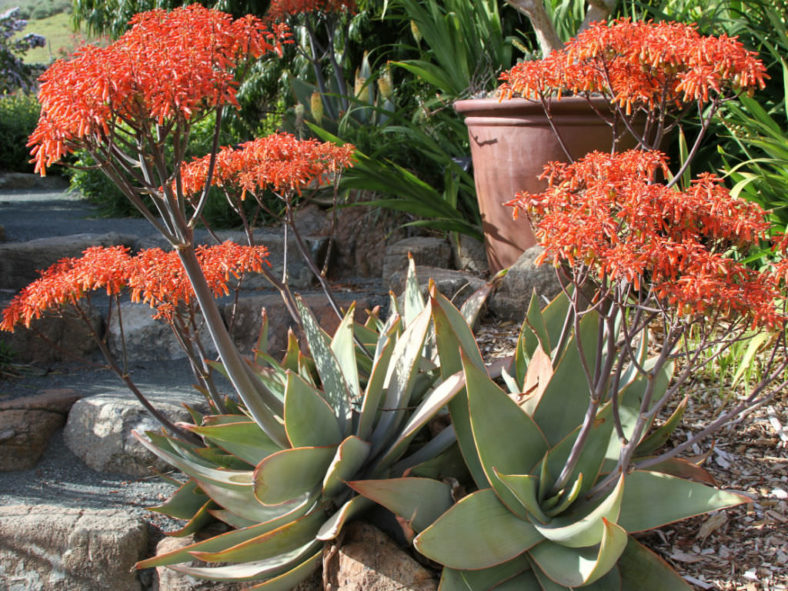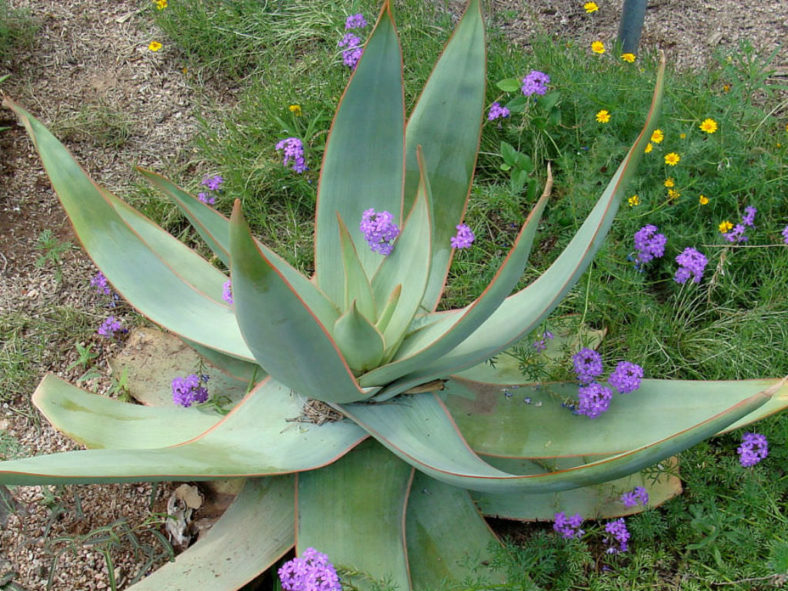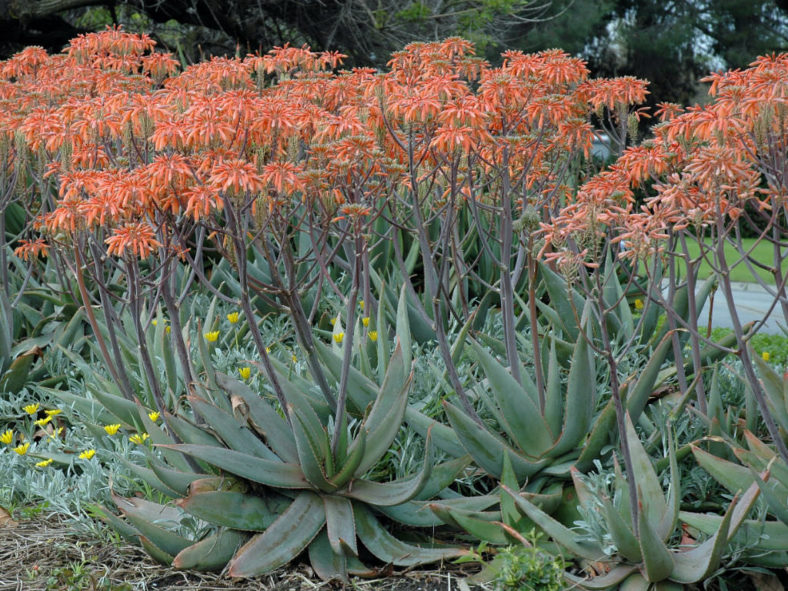Scientific Name
Aloe striata Haw.
Common Name(s)
Coral Aloe
Synonym(s)
Aloe albocincta, Aloe hanburiana, Aloe paniculata, Aloe rhodocincta, Aloe striata subsp. striata
Scientific Classification
Family: Asphodelaceae
Subfamily: Asphodeloideae
Genus: Aloe
Origin
Aloe striata is native to South Africa. It grows on rocky slopes in varied habitats in the Eastern Cape and Western Cape provinces.
Description
Aloe striata is a beautiful succulent that forms stemless or short-stemmed rosettes of glaucous to somewhat reddish-tinged leaves with usually distinct longitudinal striations. The rosettes can grow solitary or sometimes with 2 to 6 offsets, reaching up to 3.3 feet (1 m) in diameter. Old specimens sometimes develop a stem with old dry leaves persistent and can reach up to 3.3 feet (1 m) in length. The leaves are fleshy, lance-shaped, and can measure up to 20 inches (50 cm) long and 8 inches (20 cm) broad. They have spineless, pale pink to almost red margins.
The flowers are coral red, up to 1.2 inches (3 c)m long, have a globose base, and appear in dense racemes on much-branched inflorescences in winter. The inflorescences, 1 to 3 from a rosette, can grow up to 3.3 feet (1 m) tall. The racemes are head-shaped to slightly conical, usually about 2.4 inches (6 cm) long, with a nearly equal diameter.

Hardiness
USDA hardiness zone 9a to 11b: from 20 °F (−6.7 °C) to 50 °F (+10 °C).
How to Grow and Care
Aloe is a very forgiving plant. However, as with all succulents, Aloe must never be allowed to sit in stagnant water, and the plant should be carefully monitored to watch for signs of overwatering. Water generously in the summer and nearly cease watering in the winter. Do not let water stand in the rosettes.
Aloes are not particularly fast-growing and will only rarely need repotting. However, repot plants are tipping over their pots or have ceased growing in the spring. Use a fast-draining potting mix with one-third of sand or pebbles. When repotting a larger plant, dividing the root ball carefully is possible. Some kinds of Aloe will send off offsets that can be potted independently.
See more at How to Grow and Care for Aloe.
Cultivars
Links
- Back to genus Aloe
- Succupedia: Browse succulents by Scientific Name, Common Name, Genus, Family, USDA Hardiness Zone, Origin, or cacti by Genus
Photo Gallery
Click on a photo to see a larger version.



